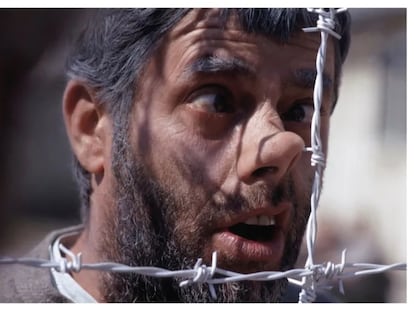‘There has never been another child actor like him’: Brad Renfro, the tragic star that Hollywood forgot
Thirty years ago, ‘The Client’ shot the 11-year-old to stardom, but when he began to struggle, the industry looked the other way
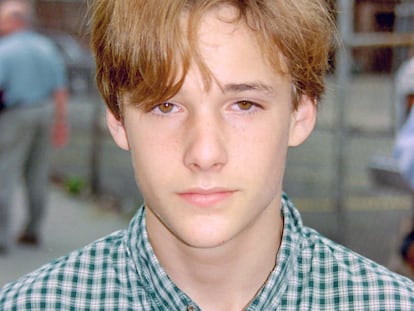

When the movie The Client was released in 1994, it won over fans across the world. The plot was addictive; Susan Sarandon was incredible (she was nominated for an Oscar for her role); it had amazing scenes shot in the outskirts of Memphis; and Tommy Lee Jones was as great as always playing the bad guy. But it was an 11-year-old boy who stole the show: Brad Renfro, a first-time actor.
Joel Schumacher picked Renfro from 6,000 candidates. He wanted a real kid who was from the very place where they were going to shoot, a boy similar to Mark Sway, the broken and wise 11-year-old character described in John Grisham’s bestseller of the same name. And he found him and made him a star. In 2020, 12 years after Renfro died of a drug overdose, New York magazine asked Schumacher if he ever thought about what would have happened to Renfro if he hadn’t chosen him for the film. “Yes,” the director replied. “But if you knew Brad’s background in Knoxville...”
Like so many other actors who rose to fame thanks to luck, natural talent or resembling character — from the Swede Björn Andrésen to the Spaniard José Luis Manzano —, Renfro’s life seemed marked by tragedy. The fact that he became the most sought-after child actor in the world at age 11, was just one more chapter in his dramatic life.
Renfro grew up with his grandmother. His parents were divorced. His mother was a heroin user. By the age of 10, he was drinking, smoking (he was incredibly good at it in The Client), and getting into trouble with the police for hanging out with troubled teenagers. He was expelled from school for being a troublemaker on the very day that a retired police officer came to his school to give a talk about the dangers of drugs. Shortly afterward, a casting director came to the Knoxville police station with a request: she was looking for a rebellious, tough, untamable kid to audition for a movie part. That retired police officer, Dennis Bowman, remembered the untamable Brad. Mali Finn, the casting director, flew to Knoxville, saw Brad at her hotel, and called the rest of the film’s crew. “I found him,” she said.
“This is still happening today,” explains Antonio Rubial, agent and director of the A6Cinema agency. “There are examples of actors who are discovered while working as bakers, for example.” But Rubial worries that someone who is suddenly taken out of their comfort zone, and finds themselves with an agent, getting invited to parties, being nominated for movies, is ill-equipped to handle the ups and downs of the industry. “After that they might get a couple more films and then, nothing. I think that this is very dangerous for people who have no vocation or training to do so,” says Rubial, adding that the practice is legitimate and common. “Actors always start out playing someone very similar to themselves.”
Movie critic Roger Ebert appeared to point this out with Renfro’s performance in The Client: “Brad Renfro is a movie newcomer who seems to be a natural actor. He’s from Knoxville, Tenn., inexperienced except for school productions, but he has an unforced conviction and a lot of backbone and provides a strong center for the film,” he wrote in the Chicago Sun Times.
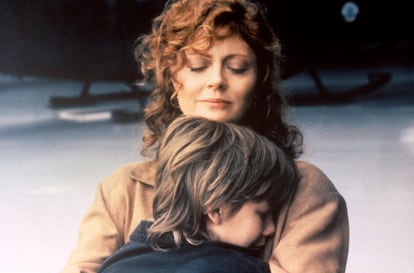
One of Renfro’s first interviews, while promoting The Client, is still astonishing today. Veteran journalist Bobbie Wygant — who had previously interviewed The Beatles, Madonna and Bette Davis — quickly realized that she had prepared questions for a child, but that Rendro wasn’t a typical kid.
“Are you a tough kid?” she asks him. “To an extent,” he says. “Get into fights?” she asks. “I used to get into fights, but after so many fights you don’t have to get into fights. You’ve got a reputation.”
When asked if he looks at things differently following his experience in The Client, he replies: “I look at things from an artistic point of view now. Art and acting is a [sic] way of escape. If you have no way to escape, you have to escape in other people’s ways.”
At another point, she asks him if he has tried drugs. The 11-year-old replies: “I’ve experimented, but nothing serious.”
In a Los Angeles Times article published shortly after Renfro’s death, sources from the production of The Client recount that the 11-year-old actor often flew alone from Knoxville to Los Angeles for auditions, that bottles of alcohol would go missing when he was around, that he would attend parties on the set with adults and that he would flirt with every woman he encountered. Most saw him as a charming scoundrel; some saw him as an “emotionally abandoned person.” With an absent father, an estranged mother dealing with her own battle with heroin and a grandmother who was unable to deal with his rebelliousness, the problem was not that Renfro was alone in the world; it was that he was alone in Hollywood.
If Renfro’s career was cut short due to his death, his career in mainstream cinema was even more brief. In 1994, he made his first film with a major studio and in 1998, he made his last. Before his death, Renfro starred in more movies, including a couple of indie hits like Ghost World and Bully, but most of them were forgotten independent films that went straight to video. That’s why the mark he left behind is even more striking: Renfro was never a big star, but his performances as a lonely, complex, tormented and rebellious youngster connected in an unprecedented way with an entire generation that saw itself reflected in him.
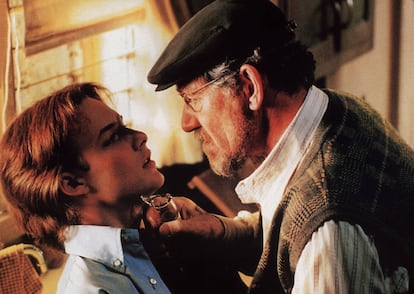
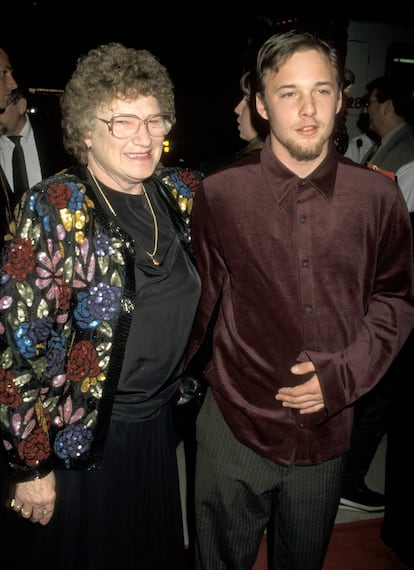
“For me, Brad was the heir to the fascination I felt for River Phoenix,” explains Carlos Montero, the creator of hits such as the TV series Élite. “Brad was an actor with an undeniable animal appeal. And a look in which all his inner turbulence could be sensed [...] You could sense he was a kamikaze in his way of approaching the characters, and also no doubt in his way of living. And that has always attracted me a lot.”
Lola, a 44-year-old New Yorker, met Brad Renfro at the age of 15, when she saw The Client. But it was thanks to The Cure (1995) — the story of friendship between two children, one of them with AIDS — that she became a diehard fan. “At that time there were many taboos around the subject and I worked as a volunteer with HIV-positive children, so that story had a deep impact on me and Brad stayed in my heart forever.”
In March 2023, Lola created an Instagram account that today has more than 12,000 followers and reviews the career of an actor who seems forgotten by social media. “The press has given a very negative image of him for years, and I think people should know that he was an incredible person. His talent was recognized, but few people had the opportunity to know that he was sweet-hearted, sincere and gentle. I wanted to tell his story in a kinder light.”
A 14-year-old man
Between 1994 and 1998, fans and the media saw a star in the making. A 12-year-old Renfro signed copies of the novel The Client and graced the covers of teen magazines, sometimes shirtless. In 1995, The Cure director Peter Horton told the Chicago Tribune that Renfro (then 13) had “enormous sex appeal.” Only later did it emerge that behind it all was a pubescent boy who was neglected and out of control.
In his memoirs, screenwriter Joe Eszterhas (who wrote the semi-autobiographical Telling Lies in America, starring Renfro) recounts his experiences with the teenager on set in 1996. “At 14 he was already a chain smoker,” writes Eszterhas, who says he caught Renfro “sneaking sips of beer that he thought no one noticed.” “Girls surrounded him, driven to the hotel by their mothers, who waited in the car while Brad busied himself entertaining them,” he continues. “Brad was the oldest fourteen-year-old I had ever met.”
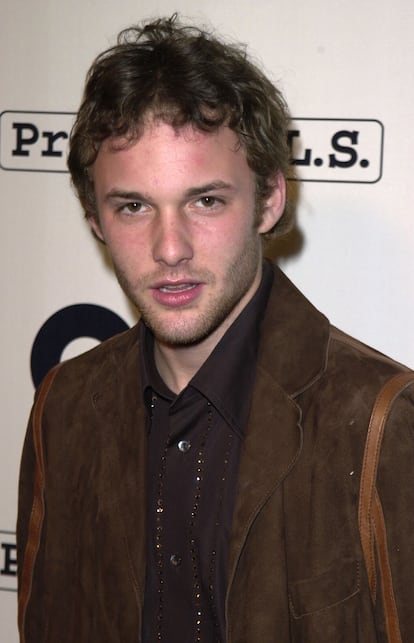
Bryan Singer’s Apt Pupil was the last major studio film that Renfro starred in. It was released in 1998 and was hit with two lawsuits alleging that the filmmakers had ordered minors to strip for a scene shot in the showers of high school locker room. Renfro, 14 at the time of filming, also appeared nude in that scene, and there were numerous scenes of him sleeping in his underwear.
Singer described the film — based on a Stephen King story about a teenager who discovers that his neighbor is a former Nazi officer and blackmails him for his kinkiest stories — as “a study in cruelty.” According to an article published by Buzzfeed News in 2018, on the 10th anniversary of the actor’s death, a studio teacher was on set to protect the underage actors on set, but they left after Renfro was forced to work more hours allowed by law (Singer told the media outlet that Renfro never went over his allowable hours).
Shortly after filming ended, the 15-year-old actor was arrested for possession of marijuana and cocaine. It was the first of several arrests. Renfro started to have trouble getting cast, but indie director Larry Clark insisted on giving him his last big role in Bully (2001), based on the true story of a group of friends who decide to take down the bully who makes their lives miserable.
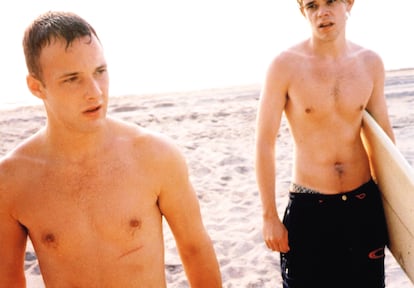
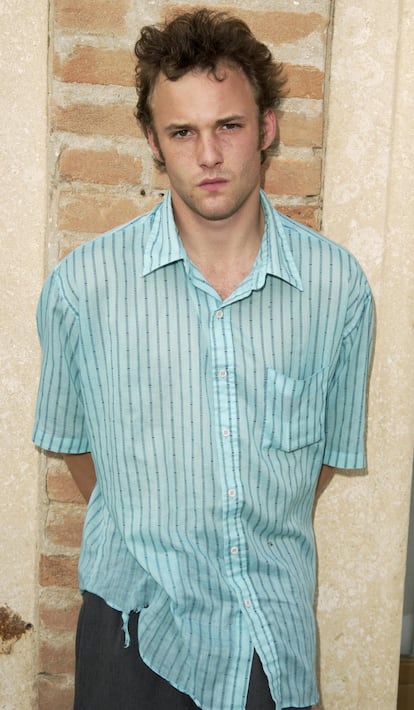
Clark told i-D magazine: “I went down to pick Brad up from Knoxville [where the actor had been living in a trailer park with his grandmother] a day after his 18th birthday [...] I drove up to his front door and he came out with blood dripping down both of his arms. He’d been shooting cocaine. He was all loaded up. He looked terrible. So I stayed with him for about three days.”
“The next morning, I said, ‘Where’s a place to get some coffee, like a Starbucks or something?’ And he got in the car, and I just drove to Florida. I kidnapped him and drove us to the shoot,” he continued. “He was kicking [his habit] in my car, and then he’d fall asleep, then wake up and kick, then fall asleep. I eventually got him down to Florida and made him work out so he lost weight. It was tough. Really, really tough.”
At the time, Renfro was making headlines for reasons other than his movies. In August 2000, when he had just turned 18, he was caught trying to steal a yacht while high and crashing it into Fort Lauderdale harbor. When Bully was released, it was met with a lukewarm response (not by everyone: Roger Ebert called it “a masterpiece on its own terms”), but since then, it has become a cult classic and remains Renfro’s last great film.
The movie was followed by a series of arrests and stints in rehab. In 2005, Renfro was arrested again in Los Angeles for trying to buy heroin from a plainclothes policeman. The photograph of Brad Renfro — the teen idol, the precocious actor revered for his raw talent — handcuffed, with his pockets out and his unfocused gaze, is perhaps one of the saddest and most representative images of the ruin that has befallen many of Hollywood’s child stars.
Renfro continued to star in independent films, which had little commercial success, and had episodic roles in TV series such as Law & Order. But he was only truly remembered by the media on January 15, 2008, when he was found dead in his home in Los Angeles. He was 25 years old. The cause of death was an overdose. It would be later revealed that Renfro had told friends that he had been born addicted to heroin, and had been using since he was 12 years old.
He died a week after Heath Ledger accidentally overdosed. And the death of the Australian actor — who was more famous than Renfro at the time — would overshadow his passing. The In Memorian section of the Oscars — held just a month and a half later — did not even include Renfro, the final insult of an industry that first neglected one of its great talents and then decided to forget that he had ever existed.
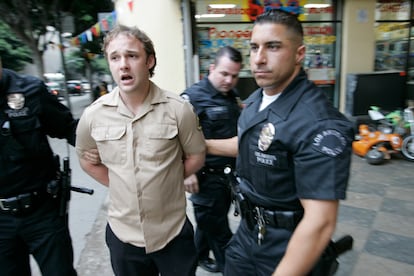
Renfro’s last interview — held in 2007 — took on new meaning after his death. “The advice I have for people who want to get into acting? Número uno: check your motives for wanting to get into it,” he said. Renfro also advised prospective actors to “stay the hell away from the party scene.” “Anything that you put in front of the prize so to speak is going to end up getting in the way and hurting you. Unfortunately, not many people are lucky enough to traverse through things like that and come out the other side.”
In recent years, in-depth reports such as Adam B. Vary’s investigation for Buzzfeed News (How Hollywood Failed Brad Renfro) and several Instagram accounts — such as the one run by Lola — have been trying to keep alive the memory of a teen idol who was like no other. “I think he was and remains relevant because his acting talent made everyone identify with him,” says Lola. “His range of emotions was incredible, especially for someone his age. And yes, he was undeniably attractive, but that was just a bonus. There has never again been a child actor with Brad’s charisma and talent.”
Sign up for our weekly newsletter to get more English-language news coverage from EL PAÍS USA Edition
Tu suscripción se está usando en otro dispositivo
¿Quieres añadir otro usuario a tu suscripción?
Si continúas leyendo en este dispositivo, no se podrá leer en el otro.
FlechaTu suscripción se está usando en otro dispositivo y solo puedes acceder a EL PAÍS desde un dispositivo a la vez.
Si quieres compartir tu cuenta, cambia tu suscripción a la modalidad Premium, así podrás añadir otro usuario. Cada uno accederá con su propia cuenta de email, lo que os permitirá personalizar vuestra experiencia en EL PAÍS.
¿Tienes una suscripción de empresa? Accede aquí para contratar más cuentas.
En el caso de no saber quién está usando tu cuenta, te recomendamos cambiar tu contraseña aquí.
Si decides continuar compartiendo tu cuenta, este mensaje se mostrará en tu dispositivo y en el de la otra persona que está usando tu cuenta de forma indefinida, afectando a tu experiencia de lectura. Puedes consultar aquí los términos y condiciones de la suscripción digital.
More information
Archived In
Últimas noticias
Chris Martin, Taylor Swift, Elijah Wood and other famous wedding ‘crashers’
‘How does it feel to be a failure?’: Elizabeth Berkley’s journey from ‘Showgirls’ ridicule to vindication
The story of the Málaga virus: The code that haunted Google’s cybersecurity center director for 30 years
The impact of Ecuador’s mega-prison: A polluted river, cleared forests and military checkpoints
Most viewed
- Christian Louboutin: ‘Young people don’t want to be like their parents. And if their parents wear sneakers, they’re going to look for something else’
- The low-cost creative revolution: How technology is making art accessible to everyone
- Liset Menéndez de la Prida, neuroscientist: ‘It’s not normal to constantly seek pleasure; it’s important to be bored, to be calm’
- All the effects of gentrification in one corner of Mexico’s Colonia Roma
- December Social Security and SSI payments: Dates, double checks and the 2026 COLA increase

